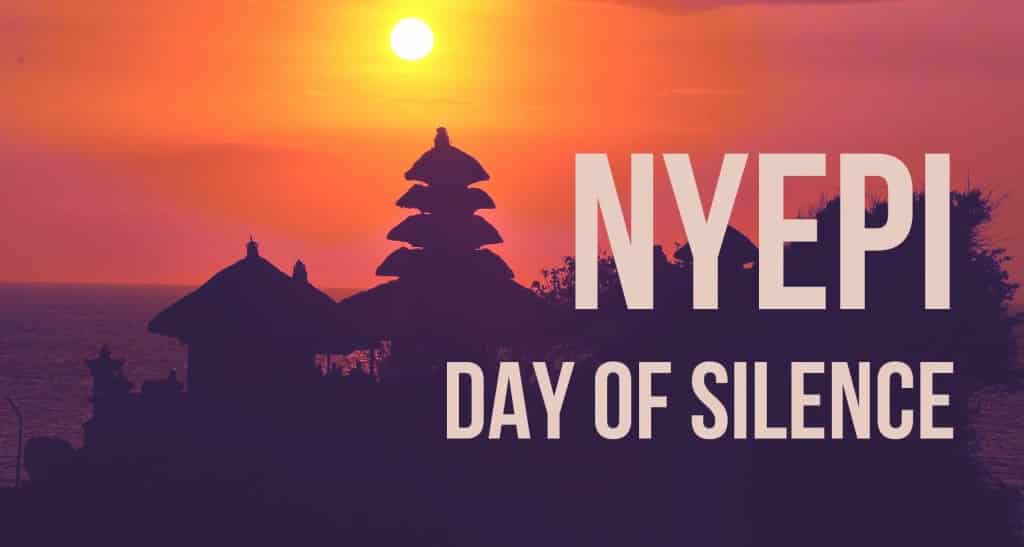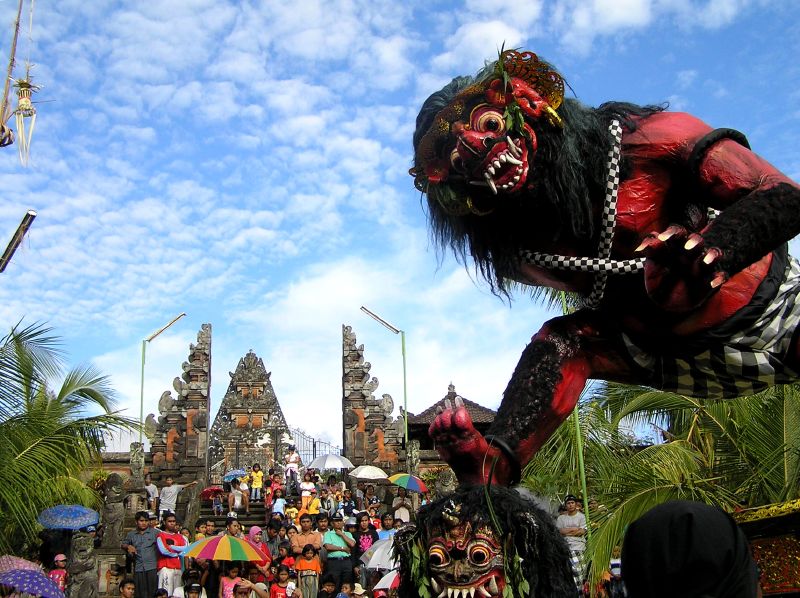Nyepi is a Balinese “Day of Silence” that is commemorated every Isakawarsa (Saka new year) according to the Balinese calendar (in 2022, it falls on March 3). It is a Balinese celebration mainly celebrated in Bali, Indonesia. On this day, all activities on the island ceased. Domestic and international flights are suspended, shops are closed, and the streets are empty. All residents stay indoors with the lights off. There was no music or entertainment, and people didn’t talk. Some people don’t even eat or drink. People focus on doing contemplation and meditation.
Many rituals will be performed before the “Day of Silence”.
 First, the Melasti Ritual is performed 3–4 days beforehand. It is dedicated to Sanghyang Widhi Wasa. The ritual is performed in Pura (Balinese temple) near the sea (Pura Segara) and meant to purify Arca, Pratima, and Pralingga (sacred objects) belonging to several temples, also to acquire sacred water from the sea.
First, the Melasti Ritual is performed 3–4 days beforehand. It is dedicated to Sanghyang Widhi Wasa. The ritual is performed in Pura (Balinese temple) near the sea (Pura Segara) and meant to purify Arca, Pratima, and Pralingga (sacred objects) belonging to several temples, also to acquire sacred water from the sea.
Second, the Bhuta Yajna Ritual is performed in order to vanquish the negative elements and create a balance with God, Mankind, and Nature. The ritual is also meant to appease Batara Kala by Pecaruan offering of live animal sacrifice. Around sunset the “Pengrupukan” ceremony begins in the house compounds with the noisy banging of pots and pans and bamboo tubes along with burning of dried coconut leaf torches to drive out the demons.
Third, the Nyepi Rituals are performed as follows: Amati Geni: No fire or light, including no electricity; Amati Karya: No working; Amati Lelunganan: No travelling; Amati Lelanguan: No revelry/self-entertainment.
Fourth, the Yoga/Brata Ritual starts at 6:00 a.m. and continues to 6:00 a.m. the next day.
 Fifth, the Ngembak Agni/Labuh Brata Ritual is performed for all Hindus to forgive each other and to welcome the new days to come.
Fifth, the Ngembak Agni/Labuh Brata Ritual is performed for all Hindus to forgive each other and to welcome the new days to come.
Sixth and finally, the Dharma Shanti Rituals are performed after all the Nyepi rituals are finished.
The night before Nyepi day, Balinese people will make Ogoh-Ogoh statues, demonic statues made of richly painted bamboo, cloth, tinsel, and styrofoam, symbolizing negative elements, malevolent spirits, or even characters from Hindu mythology. After the Ogoh-ogoh have been paraded around the village in the Ngrupuk parade, they are burned in the cemeteries, although many are kept for display or sold to collectors due to their elaborateness.
According to Wikipedia.













